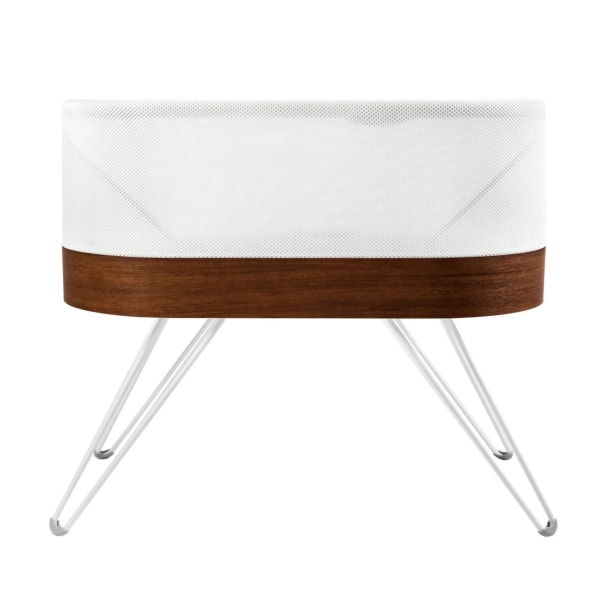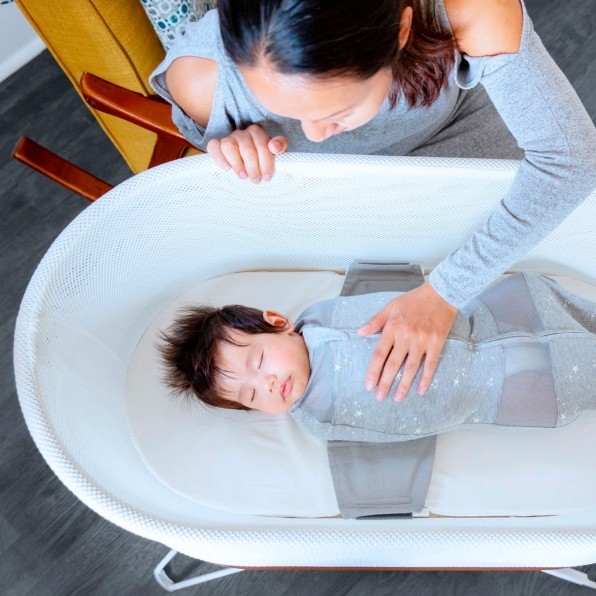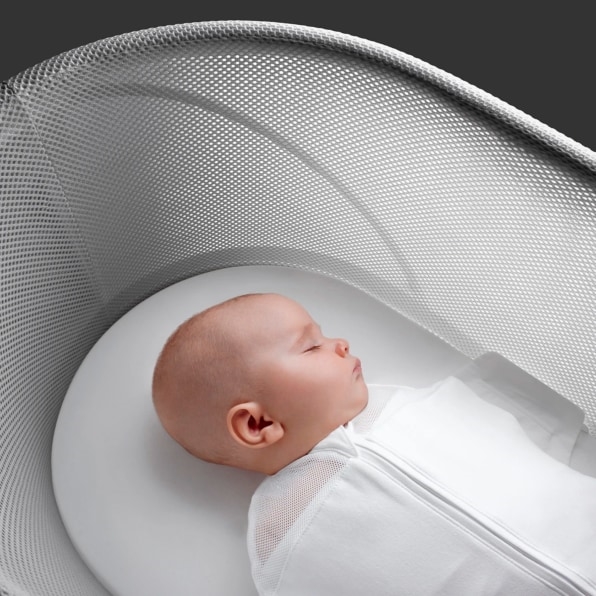The SNOO Smart Sleeper, a robotic bassinet, has a cult following among new parents who say it gives them blissful nights of sleep. But a lesser-known benefit is that it could help prevent Sudden Infant Death Syndrome (SIDS), a condition that kills 3,400 babies yearly in the United States.
On March 31, the Food and Drug Administration (FDA) has classified the SNOO as “the first bed proven to keep sleeping babies safely on their backs.” The American Academy of Pediatrics recommends babies sleep in this position for their first year of life to reduce sleep-related death.
As recently as 2019, the FDA said that no “sleep positioner,” such as bolster pillows, ever demonstrated its ability to safely keep sleeping babies on their back. But the SNOO has now done so. This is important because it may now spur insurance companies to cover the device as a benefit, much like breast pumps, making the $1,500 device accessible to more people and potentially reducing infant deaths.

SIDS is a mysterious phenomenon. Babies under a year old sometimes simply stop breathing in their sleep, for reasons that have eluded doctors for decades. Three decades ago, researchers found that most infants who died of SIDS were found sleeping on their stomachs. So, in 1994, the American Academy of Pediatrics launched a widespread educational campaign to encourage parents to put babies to sleep on their backs and not use bulky bedding that might cause a baby to suffocate. This caused the death rate from SIDS to decrease from 5,500 cases to 3,400 cases annually. But SIDS remains the leading cause of infant mortality in the U.S.
Harvey Karp, a Los Angeles-based pediatrician who wrote the bestselling book Happiest Baby on the Block, developed the SNOO with designer Yves Behar and MIT researcher Deb Roy. It’s a bassinet that gently rocks the baby and plays white noise throughout the night; when the baby cries, it increases the rocking motion and sound until the baby goes back to sleep. Crucially, however, the SNOO requires the baby to be put in a swaddle, which is then secured to the crib with hooks to keep them on their back. This prevents them from rolling onto their front.

SNOO, which is sold by Karp’s company Happiest Baby, hit the market in 2016. At $1,695 or $150 a month to rent, it was seen as a disruptive—but pricey—product that would give well-to-do parents better sleep. The company’s internal research suggest that it boosts sleep by about an hour a night compared to not using it, and allowed babies to sleep stretches of seven hours by two months of age.
But Karp says preventing SIDS was his main motivation. “As a pediatrician, I had unfortunately seen SIDS firsthand,” he says. “One of the biggest innovations of the device is simply that it keeps a baby flat on its back throughout the night. Even today, after all of the education around preventing SIDS, most babies that die of SIDS are found on their front on the death scene.”
Two years ago, Karp began the process of getting FDA approval to classify the SNOO as a medical device. He says Happiest Baby has been collecting a lot of anonymized data over the years, based on the 350 million hours babies have slept in the SNOO. Karp believes today’s authorization will allow the SNOO to be used more widely.

For one thing, it may encourage more parents to buy the product. Until now, many people have perceived it as a luxurious crib that enables more sleep, but the FDA approval will reframe it as a medical device. The $1,500 price tag might seem reasonable to some parents if it can reduce the chance that their child will die while sleeping.
But more importantly, it may also spur insurers to offer the device to new parents as a benefit. In 2010, the Affordable Care Act required most insurance companies to cover breast pumps, and Karp hopes the same may one day be true for the SNOO. Karp says Happiest Baby is already in talks with several insurance firms to discuss how this might work. Many tech and media companies already give the SNOO to new employees as a benefit, including Snap, Activision, Qualcomm, and Hulu. Karp says FDA approval might nudge other employers to follow suit, since the benefits of the SNOO have now been validated by the agency.
It wasn’t until 1986 that car seats became mandatory in all 50 states, but today it would be unthinkable for a parent to take their baby for a drive without one. One day, the same may be true for devices like the SNOO, which is known to keep sleeping babies on their backs–the recommended position for reducing SIDS.
But in the meantime, for the SNOO to have an impact, it needs to move beyond well-to-do parents, white collar employees at companies with good benefits, and even those who have insurance. “We want every new parent to be able to have use of the SNOO if they want to,” Karp says.
(15)